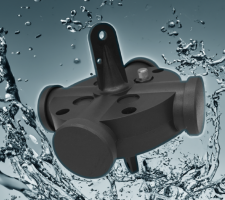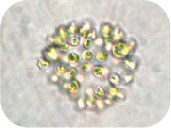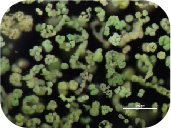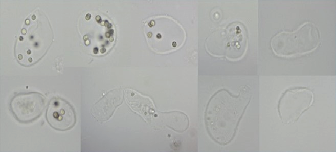Industry Research at Lake Okeechobee
August of 2022, Dr. Dail Laughinghouse, studied the effects of WaterIQ’s Pulsar device on non-target species. Many have often wondered how safe our devices are for the environment and if these devices caused harm or stress to other organisms present. Laughinghouse and his team focused his mesocosm studies on Lake Okeechobee to determine the device’s effect on phytoplankton, zooplankton, bacterioplankton and fish. The mesocosm with the ultrasound unit showed a 65% reduction of Blue-Green Algae (BGA), while the mesocosm without the ultrasound unit showed a 34% increase in BGA during the test from August 3, 2022 until September 6, 2022 while not impacting any surrounding zooplankton. WaterIQ’s water quality monitoring probes measured the following phycocyanin response. during the study timeframe:
Blue-Green Algae measured in parts per billion (PPB) in mesocosm without ultrasound
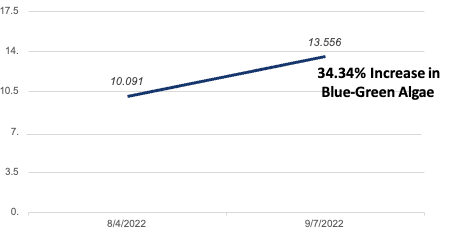
Blue-Green Algae measured in parts per billion (PPB) in mesocosm with ultrasound
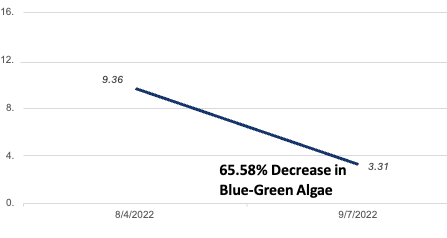
Chlorophyll A Measurements Over Time
This was also supported by Laughinghouse’s labratory measurements that show a reduction in Chlorophyll A measured over a 3 week time period as seen in the graph to the right.
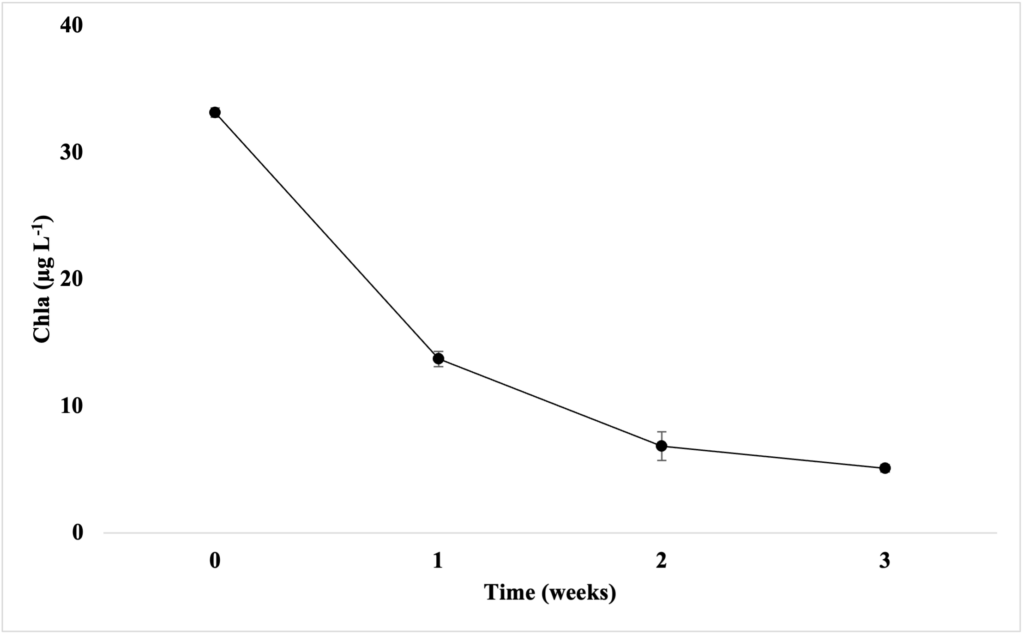
Non-target conclusions:
- Analysis showed that chlorophyll decreased over time in both the treatment and control mesocosms. Additionally, analysis of isotopes and fatty acids in both the water column and fish tissues indicated that time had more of an influence on the fatty acid profile and stable δ15N and δ13C isotopes ratios than treatment. Indicating that the ultrasound had no observable effect on non-targets.
- The composition of the cyanobacterial community structure revealed a consistent pattern throughout the duration of the study. Furthermore, no bloom-forming cyanobacteria, such as Microcystis, were also observed. Our investigation into the temporal dynamics revealed significant changes in bacterial, including cyanobacterial, communities through time, indicating a natural shift in community structure. These data suggest that ultrasound treatment did not have an observable impact on the overall structure of the bacterial community.



